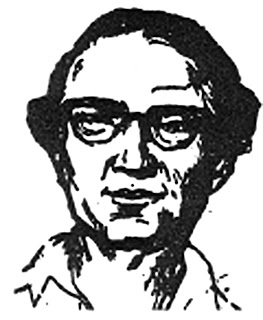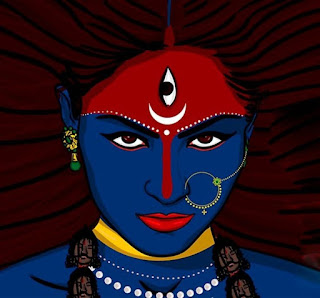legendary artiste
CELEBRATING
ABBASUDDIN AHMED'S 118TH BIRTH ANNIVERSARY
legendary artiste Abbasuddin Ahmed.
Sajedur Rahman
Reflecting on Abbasuddin's life, it begs the question on how to
best preserve the thousand-year heritage for which such artistes dedicated
their lives. Heritage is given utmost importance by Unesco. A dedicated folk
museum with archival facilities, documentations, and seasonal performance of
genuine folk artistes does not seem far-fetched. A dynamic country like
Bangladesh, rapidly taking centre-stage should not shy away from showcasing its
roots to the world. It is through preserving and nourishing such rich work that
we can commemorate the life of such legendary artistes as Abbasuddin Ahmed.
The song “O Mon Ramzan er oi Roja'r sheshey” became an instant hit
and marked the beginning of a golden era for Islamic songs. The songs of
communal harmony also had a powerful effect across religious lines, becoming
popular across both the Muslims and Hindu community. In many recorded
instances, researchers point to examples when such songs were commonly sung by
Hindu artistes often under a pseudo name.
Abbasuddin also recorded
several folk songs composed by Nazrul. These became widely popular especially with
the urban audience who did not have much access to the realm of Bangla folk
music. Nazrul also often noted his fondness for Abbasuddin's unique voice and
style of rendering Bhawaiya songs. Many music lovers will claim that songs such
as Nodir naam shoi Anjana; Padmodighir
dharey dharey appear to have been composed only to be rendered
timeless by Abbasuddin.
The contribution of Abbasuddin
cannot be understated. He recorded approximately seven hundred songs. He had an
unparalleled capacity to bring to life, through his songs, the love stories of
the village belle, the pains of the disenfranchised and the grandeur of our
heritage.
His autobiography, “Amar Shilpi
Jiboner Katha” vivifies the life and music he lived. A dozen books have been
published on him at home and abroad. His Bhatiali songs are listed in “Bhatir
Dasher Bhatiali” Volume No 1, edited by Mustafa Zaman Abbasi, his Bhawaiya and
Chatka songs are documented in “Bhawaiyar Janmobhumi” Volume No 1 and Volume No
2 edited by Mustafa Zaman Abbasi (Abbasuddin's youngest son and noted scholar,
researcher and singer).
Most of his Bhatiali songs are
composed by Pallikobi Jasimuddin, while the best Bhawaiya and Chatka
compositions are by his brother Abdul Karim; and the Bichhedi songs were
collected by Kanai Lal Shil, the famous dotara player from Faridpur. O Rangila Nayer Majhi is regarded as
an all-time favourite. Nadir Kul Nai another
popular song has been re-recorded by many artistes including his daughter the
celebrated singer Ferdausi Rahman, and his grand- daughter noted singer Dr
Nashid Kamal. Fande Poria Baga Kande Re is
another ageless song of the North Bengal.
His first record of “Adhunik”
Bangla song, “Laili tomar eshechhey phiriya” has become iconic among modern
Bangla songs.
After the Partition Abbasuddin relocated to Dhaka and joined the
Department of Publication, DP and Agriculture. In 1955, he represented the
country in the South Asian Conference of Folk Singers. In 1956, he joined the
Session of International Folk Songs Council held in Germany. In 1957 he
performed for the last time overseas at a conference in Yangon.
In the shade of the mighty
Himalayas, the Torsha, Dhorla and Kaljani Rivers flow gently across the village
of Balrampur in Cooch Behar. It was in this peaceful place that Abbasuddin
Ahmed, the doyen of folk songs, was born on October 27, 1901 to Zafar Ahmad, a
lawyer and Hiramon Nesa.
Abbasuddin Ahmed spent his
carefree days surrounded by the natural beauty of his village, drawn to the
rhythm of the gentle river, listening to the rustic gidals (folk
singers) with a dotara and
the echoing songs of the buffalo cart drivers as they made their way through
town.
While studying for his
graduation, his path crossed with Kazi Nazrul Islam's, who at that time was the
chief trainer of Gramophone Company of India or better known as HMV. HMV was
then a celebrated platform for the talented lyricists, composers and singers.
As chief trainer of HMV, it gave him the opportunity to work with the talented
group of musicians of that era (1928-1932). Around this time Abbasuddin, the
self-taught singer began to perform his own brand of folksongs—Bhawaiya, Khirol
and Chatka with strong influences of the rural and regional songs of Cooch
Behar and Rangpur region. It was not long before he too became a leading
exponent of the elite musical circle.
Besides their shared love of
music, Abbasuddin and Nazrul Islam also took up the mantle of revolutionaries
in the renaissance of Muslim Bengal. They were joined by leading poets and
writers who inspired a cultural revival across the region.
After the Partition Abbasuddin relocated to Dhaka and joined the
Department of Publication, DP and Agriculture. In 1955, he represented the
country in the South Asian Conference of Folk Singers. In 1956, he joined the
Session of International Folk Songs Council held in Germany. In 1957 he
performed for the last time overseas at a conference in Yangon.
A recipient of highest civilian
honour (received posthumously), the Shadhinata Padak, Abbasuddin's songs, in
each niche, struck a chord at the heart of the country's culture. As a major
part of Bangladesh was rural, the vast population of villagers could readily
identify with the lyrics and the musical storytelling. The country was also
criss-crossed with rivers, the banks often reverberating with songs of hundreds
of fishermen and boatmen. It was also here that Abbasuddin's timeless
Bhatiali—the boatmen's song—found a passionate following. The other major genre
of folk song called “Bhawaiya” or the “cartman's song” were sung in the northern
parts of Bangladesh like Rangpur and Dinajpur. There, the dusty, muddy roads
take the place of rivers, bullock carts replace boats, and “Bhawaiya” and
“Chatka” take the place of Bhatiali. The "Bichhedi" genre was more
rooted in pangs of separation and stories of separation. An emotional people by
nature, it is not hard to see how these songs also left an indelible mark on
Abbasuddin's listeners.
The similarities in folk songs
of many countries, for instance, Mongolia, Tibet and Southern China is apparent
in our Bhawaiya songs.
George Gearson, DC of Rangpur
during the British rule and a famous folklorist, first collected the
two-hundred-year-old song. The song was later printed in the Linguistic Survey
of India, Volume XIII and was first recorded some 80 years from now by the folk
maestro Abbasuddin Ahmed.
Similarly Nak Dengaran Betata,
a comical song, narrates how a lady, married to an imposter, later on realises
that she is deceived by false promises.
Since folk songs weave a story
of our heritage they have survived the test of time and to the delight of each
new generation, play an important role in communicating traditional values,
patriotism and sense of bonding with the soul of the nation. For this reason,
Abbasuddin shared a deep connection across the arena of folksongs.
Abbasuddin offered patronage to
several other folk singers such as Abdul Alim, Sohrab Hossain, Bedaruddin
Ahmed, Kanai Lal Sheel, Nayeb Ali Lepu, Abdul Latif, Osman Khan, Mumtaj Ali
Khan and more after he had settled down in erstwhile East Pakistan.
During the 1960s folk music
festivals were held in Dhaka during winter where authentic folk songs were
presented by singers from different parts of the country. Without such
patronage such folk instruments like sarinda,
khanak, and dhol are
becoming obsolete nowadays.
Abbas Uddin was a king of the heart of rural
people whose songs touched their heart and they got deep pleasure and
satisfaction in his songs.




Comments